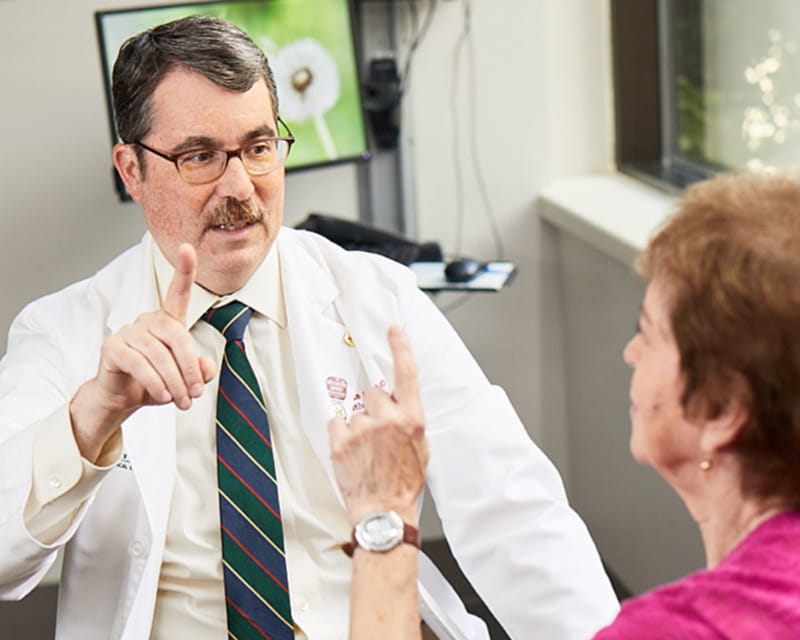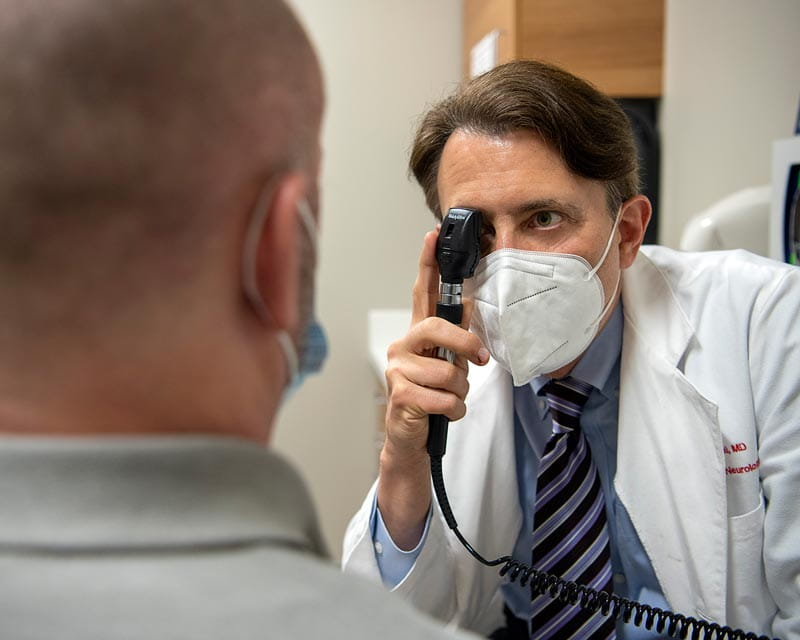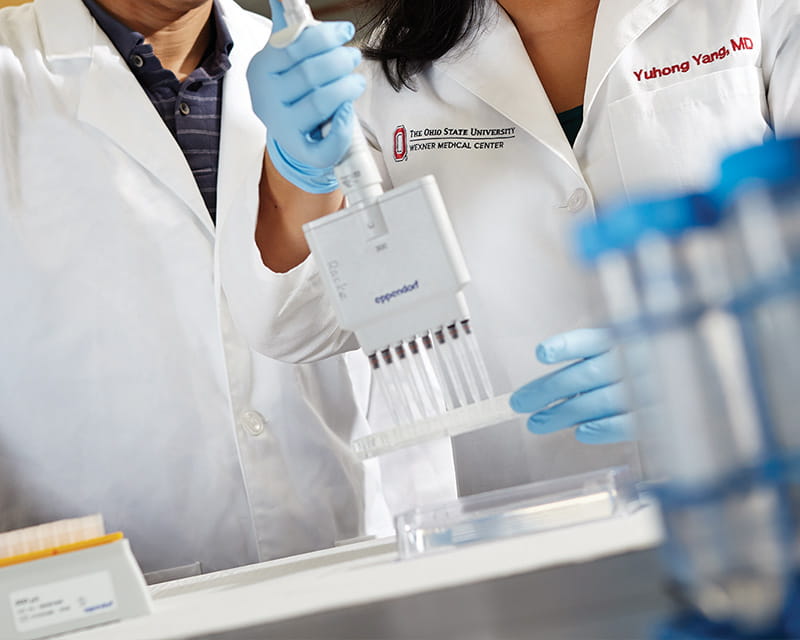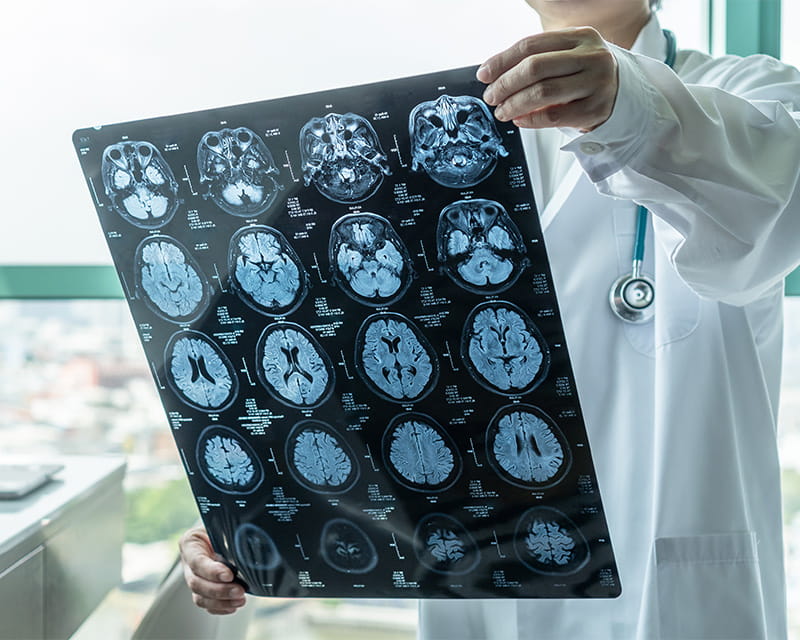
Ohio State researchers identify new biomarkers that differentiate Lewy body dementia from Alzheimer’s and Parkinson’s

After a two-year recruitment effort that’s nearly doubled the size of its faculty, the Department of Neurology at The Ohio State University Wexner Medical Center is poised to push the field of neurosciences forward even further.
Now, with nearly 60 clinical and research faculty — and the addition of several unique programs and divisions — the department is optimally equipped to diagnose and care for people with complex neurological disorders. Not only are these changes fostering an expansion of research and educational activities, but they’re also making it easier for neurologists to provide personalized treatments (and subspecialty consultations) to more patients and providers.
Building off the success of its existing telestroke network, which delivers stroke expertise via a virtual format to nearly 30 community hospitals throughout Ohio, the department has launched a Division of Teleneurology and Neurohospitalist Medicine. It allows neurohospitalists at the Ohio State Wexner Medical Center to provide remote, real-time consultations for inpatients with neurological conditions in addition to stroke.
“We want to help providers at smaller, regional hospitals evaluate and treat patients who are admitted for a range of neurological illnesses, as well as patients who develop new or worsening neurological symptoms while in hospital,” says Benjamin Segal, MD, chair of the Department of Neurology.
“In addition to performing virtual histories and exams with the assistance of advanced care providers at partner hospitals, we have the technology to guide, read and interpret electrophysiological and imaging studies remotely,” he adds. “The ability to securely share such data allows us to jointly make informed treatment decisions with our colleagues.”
As part of its investment in neurological research, the department has created a Division of Neurogenetics staffed by physicians, researchers and genetic counselors.
The team aims to identify new genetic risk factors for neurological diseases such as multiple sclerosis (MS), Alzheimer’s disease, movement disorders and neuromuscular diseases. They also hope to identify genes and epigenetic changes that modify the clinical course of these diseases and/or responsiveness to therapies.
This research will lead to an increased understanding of the genetic basis of neurological diseases, which could help drive new prevention and treatment strategies. It will also enhance one of the division’s complementary missions: To provide personalized genetic counseling to patients and family members seen in one of the many neurology specialty clinics available at the Ohio State Wexner Medical Center.
“Our researchers are working to discover genes that influence the risk, progression or therapeutic responsiveness of neurological diseases, and to elucidate intrinsic pathways and environmental factors that regulate expression of those genes,” Segal says. “On the clinical side, we’re using our findings to continuously improve testing and treatment recommendations for patients and their families. In addition to helping people understand their risks of inheriting certain genetic disorders, our genetic counselors discuss how the genes responsible for those disorders interact with their environment and lifestyle.”
Meanwhile, in an effort to better understand how biological aging alters the nervous system in the context of both health and disease, department leaders have also created a cutting-edge research center focused on the neurobiology of aging.
Team members are studying how physiological aging affects the onset, phenotype and progression of neurodegenerative diseases and other neurological disorders. They’re also investigating how age-related biological processes impact the healthy nervous system in the elderly. These processes lead to loss of synaptic connections and cerebral volume, as well as sarcopenia and other manifestations of neurological decline.
Their ultimate goal is to develop therapeutic interventions that prevent or slow down cognitive decline, gait imbalance and motor weakness associated with normal aging.
To help promote the availability of high-quality neurological care to anyone who needs it, Segal and his colleagues also created a Division of Neurology Health Services Research. This new division, the first of its kind embedded in a Department of Neurology, will be led by two National Institutes of Health R01-funded physician-scientists whose areas of expertise include the optimization of health care delivery and social determinants of health.
“We want to improve the delivery of neurological care on the population level by making it more logistically and economically efficient, as well as clinically impactful,” Segal says. “But we can’t do this without also examining and correcting the health care disparities that occur among people from different racial, ethnic, geographic and socioeconomic backgrounds. By tackling these issues simultaneously, we can deliver better care to more people.”
Other new or expanded programs in the Department of Neurology include:
“With these recent expansion efforts, we’re on track to cover all the bases in terms of our research initiatives and subspecialty expertise,” Segal says. “Now more than ever, we’re able to offer an integrated, innovative and personalized approach to patient care.”

Ohio State researchers identify new biomarkers that differentiate Lewy body dementia from Alzheimer’s and Parkinson’s

Biomarker breakthroughs at Ohio State transform disease diagnosis, predictability and treatment

The Ohio State University Wexner Medical Center pushes boundaries for neurological care